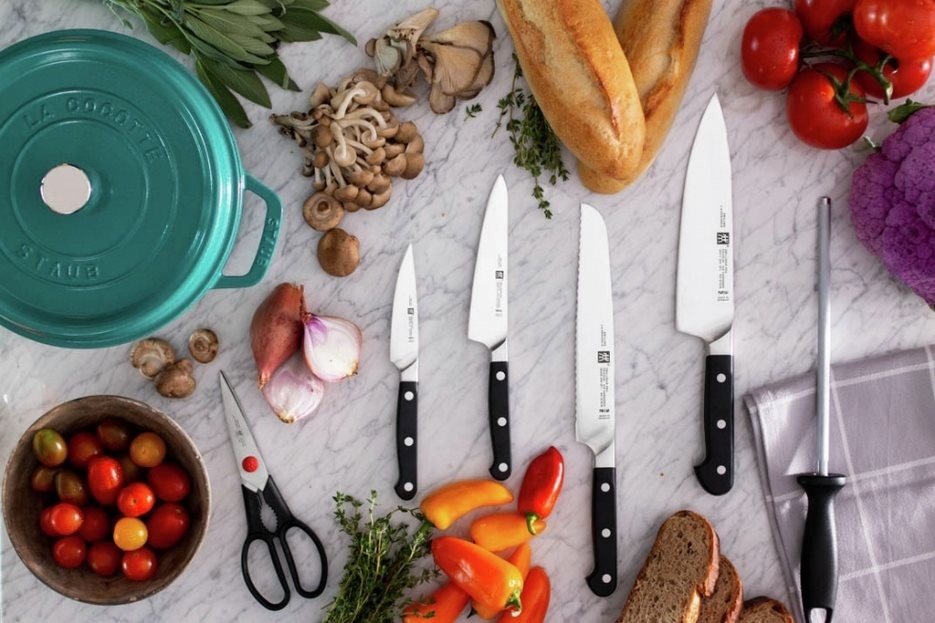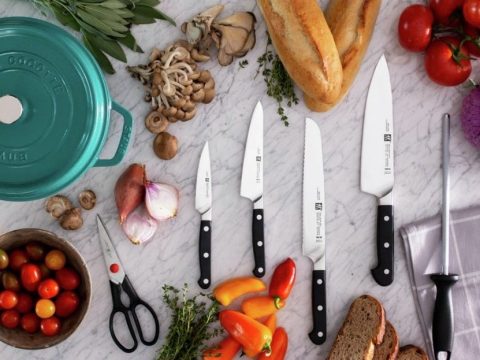Top 5 Must-Have Knives for Every Kitchen
Key Knife Features to Look For
- Comfort & Fit: The handle should feel secure and ergonomic in your hand.
- Balance: A good knife balances equally between blade and handle—test by resting the bolster on your finger.
- Blade Material: High-carbon stainless steel resists rust yet holds an edge; carbon steel stays sharper but needs more care.
- Handle Construction: Look for full tang and riveted handles or one-piece forged designs for strength and safety.
- Blade Length: Match length to tasks—8–10″ for chef’s knives, 9–12″ for bread, 3–4″ for paring, etc.
The Top 5 Knives
1. Chef’s Knife (8″–10″)
- The workhorse of the kitchen: slicing, dicing, chopping vegetables, meats, herbs and more.
- Curved blade allows a rocking motion for efficient chopping.
2. Serrated Bread Knife (9″–12″)
- Zigzag edge easily slices through crusty breads, tomatoes, pastries and more without crushing.
- Use a gentle back-and-forth sawing motion—no need to press down.
3. Paring Knife (3″–4″)
- Ideal for peeling, trimming, hulling strawberries or deveining shrimp.
- Short, nimble blade offers precise control for intricate tasks.
4. Carving/Slicing Knife (8″–12″)
- Long, thin blade for paper-thin slices of roast, turkey, ham or brisket.
- Flexible or semi-rigid designs help follow meat contours and minimize tearing.
5. Santoku Knife (7″–8″)
- Japanese multipurpose knife with a flatter profile—great for chopping, mincing and slicing.
- Granton (hollow) edge prevents food from sticking to the blade.
Knife Care & Maintenance
- Storage: Use a magnetic strip, knife block or blade guards to protect edges and prevent accidents.
- Cutting Surface: Always use wood or plastic cutting boards—avoid glass or stone.
- Cleaning: Hand-wash and dry immediately; never leave knives soaking.
- Sharpening: Regularly hone with a steel rod; sharpen on a whetstone or electric sharpener as needed.


